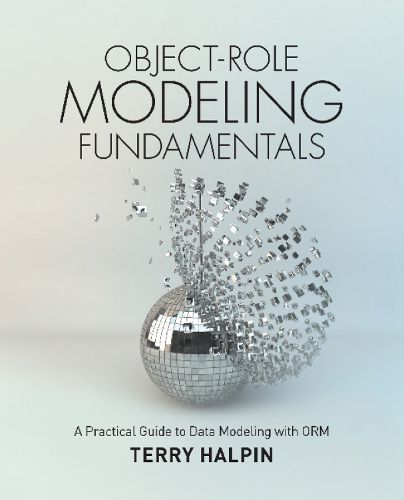Readings Newsletter
Become a Readings Member to make your shopping experience even easier.
Sign in or sign up for free!
You’re not far away from qualifying for FREE standard shipping within Australia
You’ve qualified for FREE standard shipping within Australia
The cart is loading…






This title is printed to order. This book may have been self-published. If so, we cannot guarantee the quality of the content. In the main most books will have gone through the editing process however some may not. We therefore suggest that you be aware of this before ordering this book. If in doubt check either the author or publisher’s details as we are unable to accept any returns unless they are faulty. Please contact us if you have any questions.
Object-Role Modeling (ORM) is a fact-based approach to data modelling that expresses the information requirements of any business domain simply in terms of objects that play roles in relationships. All facts of interest are treated as instances of attribute-free structures known as fact types, where the relationship may be unary (eg: Person smokes), binary (eg: Person was born on Date), ternary (eg: Customer bought Product on Date), or longer. Fact types facilitate natural expression, are easy to populate with examples for validation purposes, and have greater semantic stability than attribute-based structures such as those used in Entity Relationship Modeling (ER) or the Unified Modeling Language (UML). All relevant facts, constraints and derivation rules are expressed in controlled natural language sentences that are intelligible to users in the business domain being modeled. This allows ORM data models to be validated by business domain experts who are unfamiliar with ORM’s graphical notation. For the data modeler, ORM’s graphical notation covers a much wider range of constraints than can be expressed in industrial ER or UML class diagrams, and thus allows rich visualisation of the underlying semantics. Suitable for both novices and experienced practitioners, this book covers the fundamentals of the ORM approach. Written in easy-to-understand language, it shows how to design an ORM model, illustrating each step with simple examples. Each chapter ends with a practical lab that discusses how to use the freeware NORMA tool to enter ORM models and use it to automatically generate verbalisations of the model and map it to a relational database.
$9.00 standard shipping within Australia
FREE standard shipping within Australia for orders over $100.00
Express & International shipping calculated at checkout
Stock availability can be subject to change without notice. We recommend calling the shop or contacting our online team to check availability of low stock items. Please see our Shopping Online page for more details.
This title is printed to order. This book may have been self-published. If so, we cannot guarantee the quality of the content. In the main most books will have gone through the editing process however some may not. We therefore suggest that you be aware of this before ordering this book. If in doubt check either the author or publisher’s details as we are unable to accept any returns unless they are faulty. Please contact us if you have any questions.
Object-Role Modeling (ORM) is a fact-based approach to data modelling that expresses the information requirements of any business domain simply in terms of objects that play roles in relationships. All facts of interest are treated as instances of attribute-free structures known as fact types, where the relationship may be unary (eg: Person smokes), binary (eg: Person was born on Date), ternary (eg: Customer bought Product on Date), or longer. Fact types facilitate natural expression, are easy to populate with examples for validation purposes, and have greater semantic stability than attribute-based structures such as those used in Entity Relationship Modeling (ER) or the Unified Modeling Language (UML). All relevant facts, constraints and derivation rules are expressed in controlled natural language sentences that are intelligible to users in the business domain being modeled. This allows ORM data models to be validated by business domain experts who are unfamiliar with ORM’s graphical notation. For the data modeler, ORM’s graphical notation covers a much wider range of constraints than can be expressed in industrial ER or UML class diagrams, and thus allows rich visualisation of the underlying semantics. Suitable for both novices and experienced practitioners, this book covers the fundamentals of the ORM approach. Written in easy-to-understand language, it shows how to design an ORM model, illustrating each step with simple examples. Each chapter ends with a practical lab that discusses how to use the freeware NORMA tool to enter ORM models and use it to automatically generate verbalisations of the model and map it to a relational database.